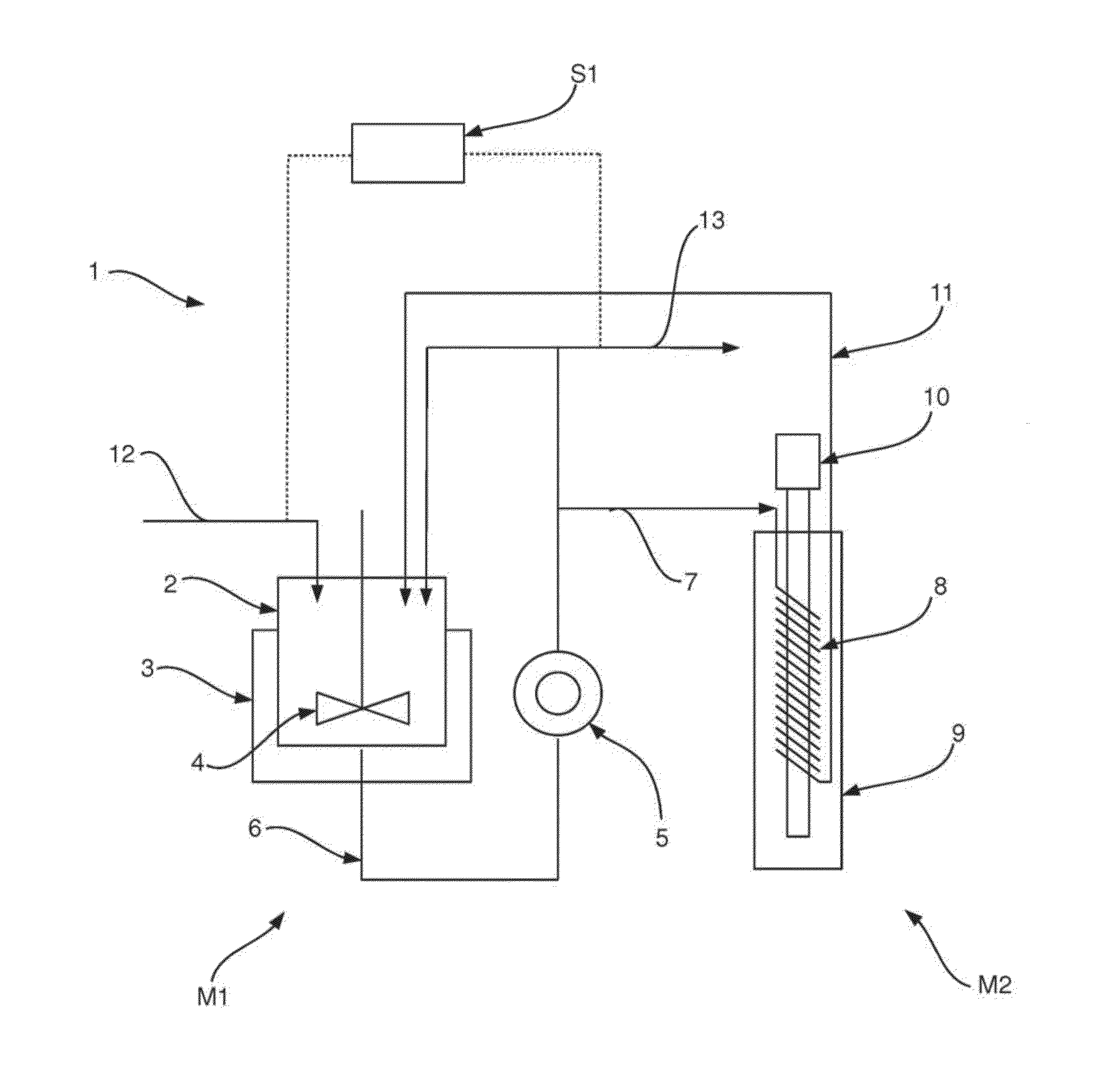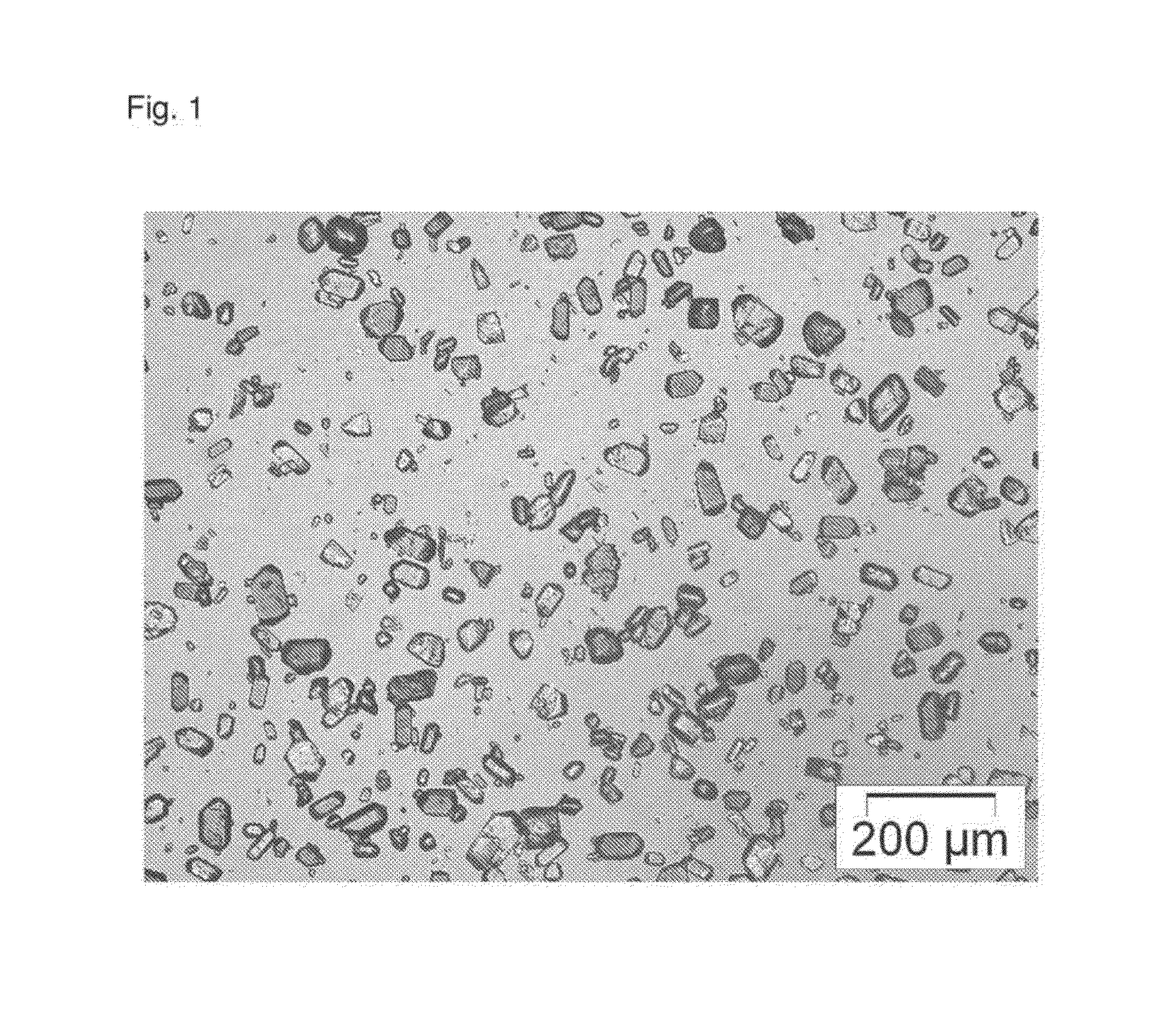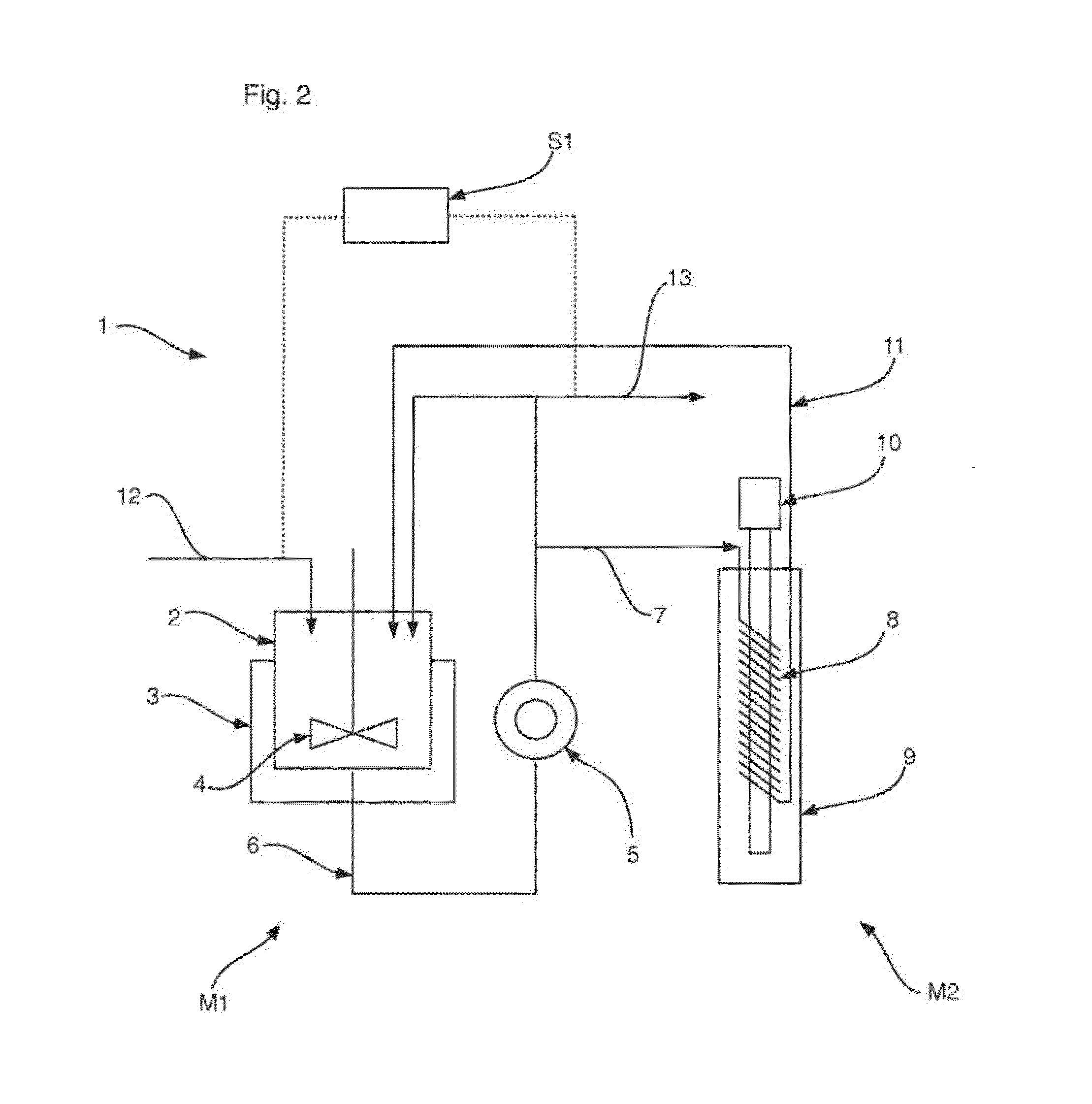Method for producing crystalline active ingredient particles
a technology of active ingredients and crystalline powder, which is applied in the direction of crystallization separation, centrifuges, gas current separation, etc., can solve the problems of limiting crystal growth, achieving crystal growth limitation, and achieving coarser grain sizes in the range of average particle diameters of more than 10 m, and achieves stable, narrow and low-agglomerate particle size distribution, large active ingredient quantity, and high efficiency
- Summary
- Abstract
- Description
- Claims
- Application Information
AI Technical Summary
Benefits of technology
Problems solved by technology
Method used
Image
Examples
example 2
[0081]In a system according to FIG. 3, the external rotor / stator apparatus with a circulation cycle is replaced by an internal Ultra Turrax stirrer and the tube resonator by a conventional ultrasound (“US”) bath. 500 g acetone / water mixture with 33 wt.-% water is placed in the crystallizer 2. 95 g progesterone is added accompanied by stirring to the acetone / water mixture in the crystallizer vessel 2. The Ultra Turrax (25G, Ika) is then activated in the crystallizer 2 at 14000 rpm and the circulation cycle with a pump, which pumps at 10 L / h suspension through a cooling coil of PTFE tube with an internal diameter of 3 mm and an overall length of 10 m which dips into the ultrasound-radiation vessel M2. An ultrasound bath filled with approx. 5 L, the temperature of which is controlled at approx. 5-10° C. with externally provided cold water, serves as ultrasound-radiation vessel. The US bath is then switched on. The temperature of crystallizer 2 is controlled at 28° C. in the jacket. Aft...
PUM
| Property | Measurement | Unit |
|---|---|---|
| particle size d50 | aaaaa | aaaaa |
| particle size | aaaaa | aaaaa |
| particle diameters | aaaaa | aaaaa |
Abstract
Description
Claims
Application Information
 Login to View More
Login to View More - R&D
- Intellectual Property
- Life Sciences
- Materials
- Tech Scout
- Unparalleled Data Quality
- Higher Quality Content
- 60% Fewer Hallucinations
Browse by: Latest US Patents, China's latest patents, Technical Efficacy Thesaurus, Application Domain, Technology Topic, Popular Technical Reports.
© 2025 PatSnap. All rights reserved.Legal|Privacy policy|Modern Slavery Act Transparency Statement|Sitemap|About US| Contact US: help@patsnap.com



